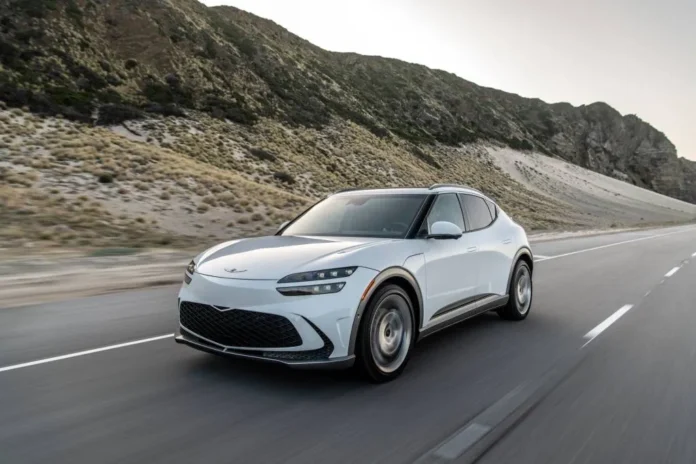The report also found that some utilities are reversing course on coal retirements.
Last year, 35 percent of the coal-fired power plants tracked by the report were set to close by 2030. This year, that number fell to 30 percent. Only 20 of the utilities plan to be entirely coal-free by 2030, a key milestone on the path to forestalling the most damaging impacts of climate change.
The consistent pattern of backsliding on near-term carbon-cutting plans indicates that vague, longer-term 2050 goals represent little more than “greenwashing” from utilities, Folger said. “We need utilities to be coming to the table in a real way. We can’t have them say ‘We’re planning to reduce emissions’ and not do anything about it.”
What’s missing from laggard utilities’ climate plans
The climate plans of the low-scoring utilities in the Sierra Club’s latest analysis share some common flaws, said Noah Ver Beek, report co-author and Sierra Club energy campaigns analyst.
First, “there are still a number of utilities that don’t release integrated resource plans or any public outline for where their grid is going,” he said. “We need those sorts of plans so that we can see what the future holds, and from a public accountability perspective.”
But even utilities with these kinds of plans may be underselling the potential for cleaner alternatives to beat fossil fuels on cost and grid-reliability terms, he added. One oft-cited example is Duke Energy, which has discounted the potential for solar power and batteries to reliably meet its growing electricity demands. The utility recently reached a settlement with regulators that calls for boosting both solar and gas power plants.
Second, “we have this enormous pool of money” that many utilities aren’t tapping into, he said, referring to the lucrative clean-energy incentives created by the Inflation Reduction Act.
These incentives have made portfolios of wind and solar power paired with batteries less costly than new gas-fired power plants in most cases, and far cheaper than coal-fired power that remains in operation across the country. Yet of the utilities the Sierra Club examined that have issued resource plans since the law was passed, roughly one-third haven’t taken those incentives into account, he said.
Meanwhile, the utilities that are using those incentives are seeing them pay off.
The Sierra Club’s report highlights utility Xcel Energy in Minnesota, which plans to use Inflation Reduction Act benefits to help replace its coal fleet with wind, solar, and energy storage by 2035. Those incentives will slash about 30 percent of the cost of replacing its Sherco coal plant with more than 700 megawatts of solar and long-duration storage.
Michigan utility DTE Energy has also tapped Inflation Reduction Act incentives to accelerate its carbon-cutting targets from 45 percent by 2030 to 65 percent by 2028, and to move forward with a battery project to replace a shuttered coal plant, the report notes.
The risks of failing to prepare for a fossil fuel-free future
Utilities that fail to take advantage of the positive economics of clean energy also run the risk of running afoul of federal rules limiting emissions from coal plants and newly built gas plants, Ver Beek said. It’s possible that those utilities are not planning to comply with the rule but are instead hoping legal challenges — including those from the industry itself — will overturn it, he noted.
The Edison Electric Institute trade group, which represents the country’s largest electric utilities, has challenged the Environmental Protection Agency’s plan to impose those emissions limits, joining Republican state attorneys general and coal mining groups seeking to overturn the rule. “That’s not adequate planning, to wait for current law to be struck down,” he said.
Ver Beek also highlighted that almost all U.S. utilities operate under a “cost of service” regulatory model that rewards them with guaranteed rates of profit on the money they invest in power plants. That financial incentive has encouraged utilities to promote capital-intensive new fossil-fuel power plants over less costly alternatives, though the rationale utilities have offered for why those new power plants are needed has changed over the years.
Rising electricity demand is the latest justification for building out these fossil-fueled power plants. But there’s a caveat: The companies driving much of the near-term demand growth, including Amazon, Google, and Meta, have aggressive clean energy goals of their own.
“We’d love to see those big power users partnering with utilities that are using clean energy, and showing that when they have a climate commitment, they support them,” she said.
That’s the primary recommendation from another Sierra Club report, “Demanding Better,” published last month, which exhorts large energy customers to use their power to push utilities and regulators in cleaner directions.
Laurie Williams, director of the Sierra Club’s Beyond Coal Campaign and co-author of the “Demanding Better” report, said there’s a clear way for big power users to do that. They just need to take utilities’ decarbonization plans into account when choosing where to locate.
“Is this a utility that has committed to decarbonizing, or one that has doubled down on fossil fuel infrastructure? It’s not a mystery,” she said. “That is the first, very simple, step.”
Source link by Canary Media
Author Jeff St. John
#Booming #power #demand #slowing #climate #progress #utilities



![Hyundai’s electric hot hatch spotted out in the wild for the first time [Images] Hyundai’s electric hot hatch spotted out in the wild for the first time [Images]](https://ev-magazine.com/wp-content/uploads/2025/12/1766723605_Hyundais-electric-hot-hatch-spotted-out-in-the-wild-for-324x160.jpeg)